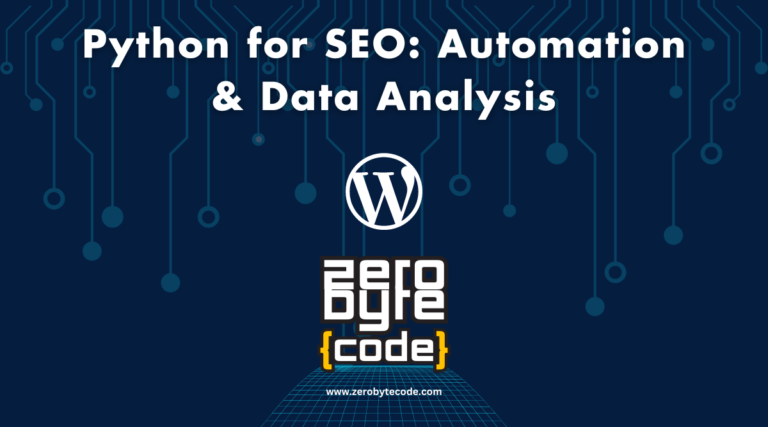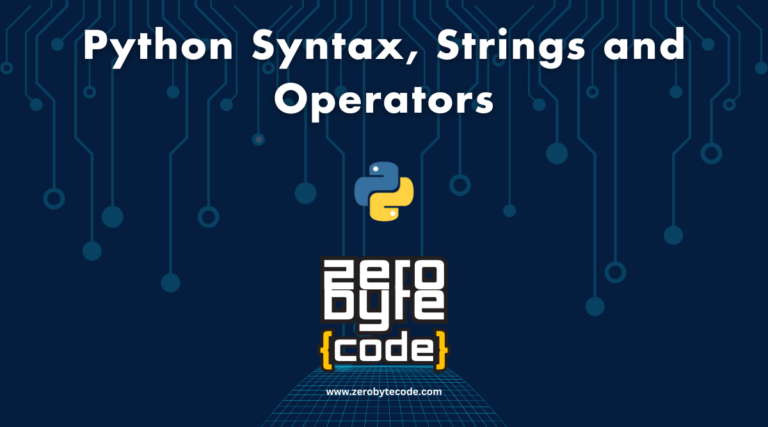How to Create an API From Scratch Using Python and Flask
When it comes to web development, creating an API with Python and Flask offers a straightforward approach that suits both novice and experienced developers.
- Introduction to Flask and API Development
- Getting Started with Flask
- Setting Up a Python Virtual Environment for Flask Development
- Designing RESTful APIs Using Flask
- Implementing API Methods in Flask
- Securing Your Flask API
- Testing and Debugging Your Flask API
- Deploying Your Flask API
- Advanced Flask Features and Best Practices
- Conclusion and Further Resources
With Flask, a lightweight and adaptable framework, developers can efficiently create and deploy scalable APIs. This discussion starts with setting up your Flask environment and then moves on to defining RESTful endpoints, where each function is designed to handle specific HTTP requests.
As we explore the complexities of handling requests and structuring responses, we’ll also examine the security implications and best practices that protect your API.
Highlights
Hide- Creating an API with Python and Flask offers a straightforward approach for both novice and experienced developers 📈
- Flask is a lightweight and adaptable framework that allows developers to efficiently create and deploy scalable APIs 🚀
- Setting up a Flask environment involves installing Python, Flask, and setting up a virtual environment 📦
- Defining RESTful endpoints is crucial for handling specific HTTP requests and structuring responses 📍
- Security implications and best practices are essential for protecting your API 🛡️
- Integrating databases with Flask-SQLAlchemy is necessary for managing and validating incoming request data 📁
- Implementing robust security features, such as authentication and permissions, is vital for safeguarding your API 🔒
- Testing and debugging are critical components of developing robust APIs with Flask 🐜
- Deploying your Flask API involves packaging and preparing your application, selecting a suitable hosting service, and configuring the server environment 🚀
- Enhancing your Flask API through advanced features and optimization techniques is essential for improving performance and scalability 🔩
- Implementing middleware and utilizing Flask Blueprints can offer additional processing capabilities and facilitate modular development 🤖
- Optimizing the performance of a Flask API involves strategic enhancements and careful consideration of deployment practices 📈
- Adhering to best practices in Flask API development and maintenance is crucial for guaranteeing long-term stability and scalability 📊
- Continuing education and exploring advanced tutorials and documentation can help developers expand their proficiency and stay up-to-date with emerging innovations 📚
This foundational knowledge lays the groundwork for more advanced topics, such as integrating databases and optimizing performance, which we’ll cover later.
Introduction to Flask and API Development
Flask is a lightweight web application framework written in Python, favored for its simplicity and flexibility in developing web APIs.
Its minimalistic design, paired with extensive documentation and a wide range of extensions, makes it a preferred choice for rapid API development.
Understanding why Flask is suited for API construction involves examining its structure, ease of integration with other Python libraries, and its capacity to scale efficiently with applications.
What is Flask and Why Use it for API Development?
Flask is a lightweight WSGI (Web Server Gateway Interface) web application framework that provides the tools and technologies necessary to build robust APIs in Python.
It is favored in the development of scalable and secure web applications due to its flexibility and minimalistic design.
Understanding the role of APIs in modern web development highlights the importance of frameworks like Flask, which streamline the creation and management of web services.
Understanding Flask: A Lightweight WSGI Web Application Framework
Why should developers consider using Flask for creating APIs?
- Simplicity and Flexibility: Flask provides a minimalistic approach, making it straightforward to start with yet highly extensible for complex applications.
- Lightweight Framework: Optimizes resources, enhancing performance.
- Rich Ecosystem: Abundant extensions and plugins available.
- Community and Documentation: Strong support and thorough guides facilitate the Flask API Python development process, ideal for both beginners and advanced users.
The Role of APIs in Modern Web Development
As the digital landscape evolves, APIs have become fundamental in facilitating efficient and scalable interactions between different software applications.
This makes frameworks like Flask critical tools for developers.
Flask API leverages Python API development, simplifying how to create an API in Python.
Its straightforward approach in API development in Python accelerates how to make an API in Python, promoting innovation and efficient solution deployment in modern web development.
Getting Started with Flask
To begin developing with Flask, the initial step involves setting up a suitable Python and Flask development environment on your machine. This setup guarantees that all necessary dependencies and libraries are correctly installed to support the creation and testing of your Flask applications.
Once the environment is configured, one can proceed to construct their first Flask application. This involves initializing a basic server and defining routes to handle specific requests.
Setting Up Python and Flask Development Environment
To initiate the development of an API using Flask, one must first verify that Python is correctly installed on their system, followed by the Flask framework itself.
The next vital step involves setting up a virtual environment, which isolates and manages dependencies specific to the project, thereby preventing potential conflicts with other Python projects.
This foundational setup creates a controlled workspace for building and testing the API, facilitating a smooth development process.
Installing Python and Flask
Before diving into Flask development, it is essential to install Python and set up the Flask framework on your system.
- Download Python: Confirm you have the latest version installed from python.org.
- Install Flask: Use pip install Flask in your command line.
- Check Versions: Verify Python and Flask versions to confirm compatibility.
- Update Pip: Confirm pip, Python’s package installer, is up-to-date for seamless installations.
Setting Up a Python Virtual Environment for Flask Development
When working on Python projects, especially those involving web frameworks like Flask, it’s essential to manage dependencies efficiently.
A Python virtual environment is a tool that helps you keep your project’s dependencies isolated from your system-wide packages, ensuring that different projects don’t interfere with each other.
This guide will walk you through setting up a Python virtual environment for Flask development.
Why Use a Virtual Environment for Flask Development?
- Dependency Isolation: Ensures that dependencies for one project don’t affect other projects.
- Reproducibility: Makes it easier to share your project with others, as they can recreate the same environment.
- Version Control: Helps manage different versions of packages for different projects.
Prerequisites
Before setting up a virtual environment, ensure you have Python installed on your system. You can check your Python version by running:
python --version
If Python is not installed, download and install it from the official Python website.
Step 1: Install venv Module (If Necessary)
In Python 3.3 and above, the venv module is included by default. If you’re using an older version of Python, you’ll need to install virtualenv instead. For this guide, we’ll use the built-in venv module.
Step 2: Create a Virtual Environment
Navigate to the directory where you want to create your Flask project. Then, run the following command to create a virtual environment:
python -m venv venv
python -m venv venv: This command creates a virtual environment namedvenvin the current directory.- The first
venvis the module name, and the secondvenvis the directory name for your virtual environment. You can name the directory anything you like.
Step 3: Activate the Virtual Environment
Once the virtual environment is created, you need to activate it. The activation process differs depending on your operating system:
On Windows:
venv\Scripts\activate
On macOS and Linux:
source venv/bin/activate
After activation, your command prompt or terminal will show the name of the virtual environment (e.g., (venv)), indicating that the virtual environment is active.
Step 4: Install Flask
With the virtual environment activated, you can now install Flask. Run the following command:
pip install Flask
This command installs Flask and its dependencies in the virtual environment, ensuring they are isolated from your system-wide packages.
Verifying the Installation
You can verify the installation by running:
pip show Flask
This command displays information about the installed Flask package, including its version and dependencies.
Step 5: Create a Basic Flask Application
Now that Flask is installed, let’s create a simple Flask application to verify everything is set up correctly.
- Create a new Python file called
app.pyin your project directory. - Add the following code to
app.py:from flask import Flask app = Flask(__name__) @app.route('/') def home(): return "Hello, Flask!" if __name__ == "__main__": app.run(debug=True) - Run the Flask application by executing:
python app.py
If everything is set up correctly, Flask will start a development server, and you should see output similar to this:
* Running on http://127.0.0.1:5000/ (Press CTRL+C to quit)
Open your web browser and navigate to http://127.0.0.1:5000/. You should see the message “Hello, Flask!” displayed.
Step 6: Deactivate the Virtual Environment
When you’re done working in the virtual environment, you can deactivate it by running:
deactivate
This command returns you to the system-wide Python environment.
Step 7: Managing Dependencies with requirements.txt
To ensure that others can replicate your environment, it’s a good practice to create a requirements.txt file that lists all the packages used in your project. You can generate this file with the following command:
pip freeze > requirements.txt
The requirements.txt file will contain a list of all installed packages and their versions. To install these dependencies in another environment, use:
pip install -r requirements.txt
Setting up a Python virtual environment for Flask development is a best practice that ensures your project’s dependencies are managed efficiently.
By following the steps outlined in this guide, you can create, activate, and manage a virtual environment, install Flask, and start building your web applications with confidence.
Remember to deactivate your environment when you’re done and use requirements.txt to manage dependencies across different environments.
Creating Your First Flask App
To begin developing your first Flask application, it is essential to understand the basic project structure required for a streamlined and effective build.
Start by creating a simple ‘Hello, World!’ example, which serves as the foundational building block of your Flask application, demonstrating the minimal setup needed to run a Flask app.
Next, we will explore the steps to configure and execute your application locally, ensuring that your development environment is properly set up to test and iterate on your Flask projects.
Structuring Your Project: A Simple “Hello, World!” Example
In this section, we will demonstrate how to structure a basic Flask project by creating a simple ‘Hello, World!’ application.
- Project Setup: Initialize a new Python environment and install Flask.
- Directory Structure: Organize your project with separate directories for templates and static files.
- Application Script: Create a main Python script to handle routes.
- Development Practices: Employ modular design for scalability and maintainability.
Running Your Flask Application Locally
Once you have structured your Flask project, you can run your application locally to see it in action.
To do this, navigate to your project’s directory in the command line and execute flask run. This command initiates a local development server, making your application accessible via http://localhost:5000 in a web browser.
Verify your environment variables are set correctly to avoid startup issues.
Designing RESTful APIs Using Flask
As we shift from basic Flask setup to the intricacies of designing RESTful APIs, it is essential to grasp the foundational principles of REST architecture.
In planning your API with Flask, thoughtful consideration of endpoints, data formats, and communication methods will guarantee a robust and scalable system.
Each component must be meticulously designed to adhere to REST standards, facilitating seamless interaction between client and server.
Understanding REST Principles
In this section, we will explore the fundamental concepts of RESTful APIs and understand why REST is a preferred architecture for web services.
By adhering to REST principles, APIs designed using Flask can offer greater scalability, simplicity, and compatibility across a wide range of platforms and environments.
We will discuss how these advantages contribute to the efficiency and effectiveness of web services, setting the stage for a deeper exploration of RESTful API development with Flask.
Basic Concepts of RESTful APIs
Understanding the fundamental principles of RESTful APIs is essential for designing effective interfaces in Flask that communicate efficiently with clients.
- Statelessness: Each request from client to server must contain all information needed to understand the request.
- Client-Server Architecture: Separation of concerns is maintained, enhancing scalability.
- Uniform Interface: Simplifies architecture by using standard HTTP methods.
- Layered System: Client cannot ordinarily tell whether it is connected directly to the end server or an intermediary.
Advantages of REST for Web Services
Why do RESTful APIs offer significant benefits for web service development?
REST, or Representational State Transfer, enables scalable, flexible, and efficient interaction models. It leverages standard HTTP methods, reducing the overhead of handling complex operations.
In addition, REST’s stateless nature simplifies client-server communications, enhancing performance and reliability.
Planning Your Flask API
As we shift into planning your Flask API, it is vital to outline the structure and functionality by defining specific endpoints and their corresponding HTTP methods.
This framework guarantees that the API adheres to RESTful principles, facilitating clear and efficient communication between the client and server.
Additionally, careful consideration of the data formats used for request and response payloads is essential for maintaining consistency and enhancing the API’s interoperability.
Defining Endpoints and HTTP Methods
To effectively develop a RESTful API using Flask, it is essential to meticulously define endpoints and HTTP methods that align with the intended server-client interactions.
- GET: Retrieve data; e.g.,
/usersfor listing users. - POST: Create new resources; e.g.,
/usersto add a new user. - PUT: Update existing resources; e.g.,
/users/{id}to modify user details. - DELETE: Remove resources; e.g.,
/users/{id}to delete a user.
Considering Data Formats and Communication
When designing RESTful APIs using Flask, it is essential to select appropriate data formats and establish clear communication protocols.
Opt for JSON as the primary data interchange format due to its lightweight nature and easy integration with web technologies.
Guarantee robust communication by meticulously defining API endpoints and HTTP status codes to facilitate precise interactions between the client and server, enhancing the overall efficiency of data exchanges.
Implementing API Methods in Flask
In this section, we will explore how to implement the core HTTP methods – GET, POST, PUT, and DELETE – using Flask, which are vital for creating functional APIs that interact with data effectively.
Each method serves a specific role, from retrieving data to updating or deleting it, and understanding their proper use is essential for building a robust API.
We will also cover best practices for handling data within these methods to guarantee the API remains secure and efficient.
Handling HTTP Methods: GET, POST, PUT, and DELETE
In developing an API with Flask, it’s essential to understand how to configure routes that can handle various HTTP methods such as GET, POST, PUT, and DELETE.
These methods facilitate the creation, reading, updating, and deletion of resources, respectively, which are fundamental operations in any RESTful API.
Proper implementation also involves returning appropriate responses and effectively managing errors to enhance the robustness and reliability of the API.
Creating Routes that Handle Different Methods
Flask enables the creation of versatile routes that efficiently handle various HTTP methods such as GET, POST, PUT, and DELETE to facilitate diverse API functionalities.
@app.route('/api/resource', methods=['GET'])for retrieving data.@app.route('/api/resource', methods=['POST'])for creating new entries.@app.route('/api/resource/<id>', methods=['PUT'])for updating existing data.@app.route('/api/resource/<id>', methods=['DELETE'])for removing data.
Returning Responses and Handling Errors
Properly returning responses and managing errors are essential components of API development in Flask, ensuring that different HTTP methods like GET, POST, PUT, and DELETE are effectively handled.
Implementing structured error handling and response mechanisms allows developers to provide clear feedback and maintain robust interaction with client applications, fostering a reliable and efficient API environment tailored to innovative needs and sophisticated digital ecosystems.
Working with Data
In this section, we will explore how to enhance Flask API capabilities by integrating database functionalities using extensions such as Flask-SQLAlchemy.
We will also discuss the importance of managing and validating incoming request data to guarantee robust and secure data handling.
These practices are pivotal in building efficient and reliable APIs that can effectively process and respond to client requests.
Utilizing Flask Extensions Like Flask-SQLAlchemy for Database Integration
To integrate databases efficiently within a Flask application, the Flask-SQLAlchemy extension provides a seamless interface.
- Object-Relational Mapping (ORM): Simplifies database transactions and models while maintaining data integrity.
- Session Management: Automates transaction sessions, enhancing consistency and rollback capabilities.
- Query Language: Utilizes SQLAlchemy’s powerful query capabilities for robust data retrieval.
- Migration Support: Integrates with Flask-Migrate to handle database schema changes dynamically.
Managing Request Data and Validating Inputs
After discussing the integration of databases with Flask-SQLAlchemy, the next step involves managing request data and validating inputs to guarantee reliable API interactions.
Utilizing Flask’s request object, developers can access data sent by users, while libraries like Marshmallow validate and serialize inputs, ensuring data integrity and security.
This systematic approach streamlines data handling, making APIs robust and less prone to errors.
Securing Your Flask API
As we shift from the creation of API methods to enhancing security, it is essential to understand the foundational concepts of API security and their application within the Flask framework.
Implementing robust security features in Flask not only protects data but also fortifies the API against common vulnerabilities.
The following section will explore practical strategies to integrate security enhancements, ensuring a secure and reliable Flask API.
Introduction to API Security
As we construct APIs using Flask, securing them becomes paramount to prevent unauthorized access and data breaches.
Addressing common security concerns involves understanding potential vulnerabilities that APIs might face and structuring defenses accordingly.
To safeguard your Flask API, implementing basic authentication and permissions is essential, ensuring that only authorized users can access sensitive functions and data.
Common Security Concerns with APIs
When developing an API with Flask, addressing security vulnerabilities is essential to protect sensitive data from unauthorized access and prevent potential cyber attacks.
- Injection Flaws: SQL, NoSQL, or command injection vulnerabilities.
- Sensitive Data Exposure: Inadequate data encryption and storage practices.
- Security Misconfiguration: Default settings, incomplete configurations.
- System Vulnerabilities: Outdated software, unpatched security gaps.
Implementing Basic Authentication and Permissions
Building on our understanding of common security concerns, we now explore how to implement basic authentication and permissions in your Flask API to enhance protection against unauthorized access.
Employ HTTP basic authentication using Flask’s flask_httpauth to verify user credentials.
Define roles and permissions systematically, integrating them within your endpoints to control access based on user roles, ensuring only authorized actions are performed by authenticated users.
Adding Security Features to Flask
As we enhance the security of our Flask API, it is essential to implement robust authentication mechanisms.
Employing Flask-HTTPAuth offers a straightforward solution for setting up basic authentication layers that can protect endpoints against unauthorized access.
For a more fortified security posture, integrating secure tokens provides an additional layer of defense, ensuring that data exchanges are authenticated and encrypted.
Using Flask-HTTPAuth for Basic Security Layers
Why should you consider Flask-HTTPAuth for securing your Flask API? This extension offers simple yet effective tools to introduce basic authentication mechanisms, which are essential for protecting your API endpoints.
- Simplicity: Easy to set up and integrate.
- Flexibility: Supports multiple authentication types.
- Compatibility: Works seamlessly with other Flask extensions.
- Community Support: Benefits from a robust community and regular updates.
Leveraging Secure Tokens for Enhanced Security
While Flask-HTTPAuth provides a solid foundation for security, implementing secure tokens offers a more robust layer of protection for your API.
Utilizing tokens such as JWT (JSON Web Tokens) enhances security by ensuring that each request to your API is accompanied by a verified token, thereby preventing unauthorized access.
This method is essential for maintaining the integrity and confidentiality of data transmitted between clients and your server.
Testing and Debugging Your Flask API
To guarantee the reliability and robustness of your Flask API, it is essential to implement thorough testing and address common debugging challenges.
Writing tests for your API facilitates early detection of defects and aids in maintaining code quality throughout the development lifecycle.
In addition, understanding and rectifying common issues not only enhances functionality but also improves the overall performance and security of the application.
Writing Tests for Your API
Testing is a critical component of developing robust APIs with Flask, ensuring that each function behaves as expected before deployment.
This section introduces the concept of testing within the Flask framework, highlighting essential tools and libraries that facilitate the creation and management of test cases for Flask APIs.
Overview of Testing in Flask
In Flask, writing tests for your API is a critical step towards ensuring robustness and reliability in your application.
- Simulate client requests: Mimic client interactions with your API.
- Check response integrity: Validate the structure and data of API responses.
- Automate error handling tests: Systematically test API resilience against invalid inputs.
- Monitor performance: Assess the efficiency and speed of response times.
Using Tools and Libraries for Testing Flask APIs
Several tools and libraries are available to enhance the testing process of Flask APIs, offering features that streamline the creation and execution of tests.
| Tool/Library | Purpose | Key Feature |
|---|---|---|
| Pytest | Testing Framework | Detailed Assertions |
| Flask-Testing | Flask Extension | Contextual Environments |
| Postman | API Testing and Building | User-Friendly Interface |
| Coverage.py | Code Coverage Analysis | Coverage Reporting |
| Tox | Automation Tool | Multi-Environment Testing |
Debugging Common Issues
When developing APIs using Flask, it is essential to adopt effective debugging strategies to quickly identify and resolve issues.
One powerful tool available to developers is the Flask Debug Mode, which facilitates real-time error tracking and provides interactive debugging sessions.
This mode not only enhances development efficiency but also helps in maintaining a clear understanding of the application’s behavior during various stages of development.
Approaches to Debugging Flask Applications
Effective debugging of Flask applications often begins with identifying common issues that can disrupt API functionality.
- Logging: Implement detailed logging to trace errors and application flow.
- Error Handling: Create custom error responses for clarity.
- Unit Testing: Develop tests for each API endpoint.
- Environment Consistency: Verify development and production environments are as similar as possible to avoid environment-specific bugs.
Using Flask Debug Mode for Development Efficiency
Building on established debugging strategies, utilizing Flask’s debug mode can greatly enhance development efficiency by providing real-time error feedback and server reload capabilities.
This mode, when activated, monitors changes in the codebase, automatically reloading the application and highlighting errors with precise traceback.
Such features expedite troubleshooting, minimize downtime, and streamline the iterative process of API development, ensuring robust, error-resistant deployments.
Deploying Your Flask API
After successfully testing and debugging your Flask API, the next critical step is deployment, which makes your application accessible to users.
This section will guide you through selecting an appropriate deployment platform and the specific steps required to deploy your Flask API effectively.
Understanding these elements is essential for a smooth shift from development to production.
Choosing a Deployment Platform
Selecting an appropriate deployment platform is an essential step for the successful launch of a Flask API.
This section will compare the features, performance, and cost-effectiveness of three popular platforms: Heroku, AWS, and DigitalOcean.
Each platform offers unique advantages and limitations that can greatly impact the operational efficiency and scalability of your Flask application.
Overview of Popular Python-Friendly Hosting Solutions
Choosing the right hosting platform for deploying your Flask API is essential, as it affects both the performance and scalability of your application.
- Cloud Services: Versatile and scalable, suitable for dynamic traffic.
- Dedicated Servers: Offer full control and high performance.
- VPS Hosting: A balance of cost, control, and customization.
- PaaS Solutions: Streamlined deployment and management, focusing on application development rather than infrastructure.
Comparing Heroku, AWS, and DigitalOcean for Flask Deployment
To effectively deploy a Flask API, it is important to evaluate popular platforms such as Heroku, AWS, and DigitalOcean, each offering distinct advantages and limitations.
Heroku provides simplicity and integrated tools for rapid deployment.
AWS offers extensive scalability and thorough services for complex applications.
DigitalOcean appeals with straightforward pricing and high performance for smaller scale projects, making it essential to align platform choice with specific project needs.
Deployment Steps
To successfully deploy your Flask API, the initial step involves packaging and preparing your application. This process includes consolidating your application’s dependencies, optimizing configuration settings for production, and guaranteeing all resources are properly included.
Following preparation, the next phase is deploying your application to a live server. This entails selecting a suitable hosting service, configuring the server environment, and managing the deployment process to guarantee uptime and performance.
Packaging and Preparing Your Flask Application for Deployment
Before deploying your Flask application, it is essential to package it properly, ensuring all dependencies are correctly included.
- Create a requirements.txt file: List all Python packages your application needs.
- Utilize environment variables: For sensitive data and configuration flexibility.
- Configure WSGI: For serving your application.
- Dockerize the application: Optional, for ease of deployment and environment consistency.
Deploying and Managing Your App on a Live Server
Once your Flask application is packaged correctly, the next phase involves deploying it to a live server to confirm it is accessible to users over the internet.
Select a cloud service provider like AWS or Heroku, configure the server environment, set up DNS management for routing, and ascertain robust security measures.
Continuous monitoring and updates are essential for maintaining system integrity and performance.
Advanced Flask Features and Best Practices
As we progress to more sophisticated aspects of using Flask for API development, it’s essential to focus on enhancing your Flask API through advanced features and optimization techniques.
This segment will explore several best practices that can greatly improve the performance and scalability of your applications.
We will also discuss practical strategies for implementing these improvements effectively, ensuring your Flask API remains robust and efficient.
Enhancing Your Flask API
To elevate the functionality of your Flask API, integrating middleware can offer additional processing capabilities, such as request modification or response transformation, before reaching the application logic.
Utilizing Flask Blueprints facilitates the organization and scalability of larger applications by allowing developers to modularize features into distinct components.
Adopting these advanced features and patterns guarantees a robust, maintainable, and scalable API architecture, essential for handling complex application demands.
Incorporating Middleware for Additional Functionality
Incorporating middleware into your Flask application frequently enhances its functionality and efficiency by enabling pre- and post-request processing. Middleware can serve as a powerful tool for:
- Authentication: Managing user access and security validations.
- Logging: Recording request and response data for debugging or analytics.
- Caching: Storing responses to reduce server load and improve response times.
- Error Handling: Streamlining responses and management of different error states.
Scaling Your Application with Flask Blueprints and Other Patterns
Scaling your Flask application effectively often requires the implementation of Flask Blueprints to manage larger or more complex application architectures.
Blueprints facilitate modular development, allowing developers to organize and reuse code efficiently.
Additionally, it supports the integration of other advanced patterns such as application factories and the decorator pattern, enhancing scalability and maintainability.
These practices are paramount for innovatively scaling applications in dynamic environments.
Flask API Optimization and Best Practices
Optimizing the performance of a Flask API involves strategic enhancements and careful consideration of deployment practices.
Critical best practices for Flask API development include the implementation of efficient data handling, appropriate caching mechanisms, and the utilization of asynchronous programming techniques.
Additionally, regular maintenance routines are essential to guarantee the API’s continued efficiency and reliability, which involves updates, security patches, and performance monitoring.
Tips for Optimizing Flask API Performance
To enhance the performance of a Flask API, developers should focus on efficient data handling and application structuring.
Utilize caching mechanisms to reduce database query load.
Implement asynchronous tasks for non-blocking operations.
Optimize data serialization processes to speed up data exchange.
Deploy load balancing to distribute client requests evenly across servers.
These strategies guarantee a robust and high-performing API infrastructure.
Best Practices for Flask API Development and Maintenance
Building on performance optimization, it is equally important to adhere to best practices in Flask API development and maintenance to guarantee long-term stability and scalability.
Employ modular design to enhance readability and reusability.
Prioritize security by implementing CSRF protection and rate limiting.
Regularly update dependencies and Flask versions to mitigate vulnerabilities.
Utilize extensive logging for better troubleshooting and monitoring, ensuring a robust, efficient API ecosystem.
Conclusion and Further Resources
As we conclude our exploration of building APIs with Python and Flask, it is crucial to reflect on the pathways for further enhancement of your technical skills and understanding.
For developers seeking to expand their proficiency, a variety of advanced tutorials and documentation are available that focus on integrating more complex functionalities within Flask applications.
Additionally, engaging with community forums and contributing to open-source projects can provide practical experience and peer feedback that are invaluable for continuous learning and improvement.
Wrapping Up and Additional Learning Paths
We have now explored how to create an API using Python and Flask, and are ready to investigate further resources and advanced learning paths to expand your skills.
Building on the foundational knowledge you have acquired, it is essential to examine more complex aspects of API development and related technologies to enhance your capabilities and adapt to emerging innovations in software engineering.
To facilitate your continued growth and exploration, consider the following resources and learning paths:
- Advanced Flask Techniques: Dive deeper into Flask to understand middleware, blueprints for application scalability, and Flask extensions like Flask-RESTful for REST API development.
- Asynchronous Programming: Learn about asynchronous techniques in Python with libraries like asyncio and frameworks such as FastAPI to handle concurrent requests, improving the scalability and performance of your APIs.
- Containerization with Docker: Understand how to containerize your Flask applications with Docker, simplifying deployment and ensuring consistency across development, testing, and production environments.
- Microservices Architecture: Explore the design patterns of microservices architecture to build robust, scalable systems and how to manage inter-service communication effectively.
These paths not only refine your technical skills but also prepare you to tackle complex problems with innovative solutions in the evolving landscape of technology.







